Small Vintage Porcelain Chinese Bowl, Decorated Exterior: 151,100 ppm Lead — That’s more than 15% Lead, 90 ppm Lead is toxic to kids
Please continue reading below each of the images.
I’ve asked for feedback on this (to learn more about it) from my Facebook friends and have come up with the following scenario:
It looks like it is a Chinese bowl that was sold several decades ago by Gumps of San Francisco (probably c. 1960 – 1980.)
Starting from the year I was born (1969), we visited my grandparents in San Francisco each and every year (usually twice a year). My memories of that era 40-50 years ago, was that pretty much everyone visiting San Francisco at that time seemed to make a point to bring souvenirs home from San Francisco’s Chinatown — and my grandfather took us to Chinatown for souvenirs every single visit. I also remember Gumps from when I was a little girl — that was where all the “Fancy” people went to buy their San Francisco souvenirs!
With all the testing I do, I have seen these bowls in homes all over the country and that scenario makes sense — that these Chinese bowls were likely purchased at Gumps by (Fancy!) folks from around the country and taken home with them as their San Francisco souvenirs.
When tested with an XRF instrument, this little Chinese ceramic bowl had the following readings.
Exterior Decorative Elements:
High reading at a minimum test length of 60 seconds.
- Lead (Pb): 151,100 +/- 6,800 ppm
- Cadmium (Cd): Non-Detect (ND)
- Mercury (Hg): Non-Detect (ND)
- Barium (Ba): Non-Detect (ND)
- Chromium (Cr): Non-Detect (ND)
- Antimony (Sb): Non-Detect (ND)
- Selenium (Se): Non-Detect (ND)
- Bromine (Br): 122 +/- 25 ppm
- Tin (Sn): 1,435 +/- 129 ppm
- Zinc (Zn): 1,515 +/- 131 ppm
- Copper (Cu): 2,924 +/- 213 ppm
- Iron (Fe): 1,666 +/- 303 ppm
- Manganese (Mn): 82- +/- 335 ppm
Even the unadorned plain white inside surface of this bowl was positive for a high level of lead!
Please continue reading below the images.
White Interior of Bowl:
Also tested for a minimum of 60 seconds.
- Lead (Pb): 1,161 +/- 49 ppm
- Cadmium (Cd): Non-Detect (ND)
- Mercury (Hg): Non-Detect (ND)
- Barium (Ba): Non-Detect (ND)
- Chromium (Cr): Non-Detect (ND)
- Antimony (Sb): Non-Detect (ND)
- Selenium (Se): Non-Detect (ND)
- Zinc (Zn): 40 +/- 18 ppm
- Iron (Fe): 4,465 +/- 307 ppm
- Bismuth (Bi): 100 +/- 18 ppm
- Vanadium (V): 88 +/- 23 ppm
- Titanium (Ti): 170 +/- 33 ppm
Please continue reading below the images.
Recommendation: Do NOT use bowls like this for food use purposes; 151,100 ppm Lead is a LOT of Lead! For context, modern items are considered unsafe for use by children if they are as low as 90 ppm Lead (or higher) in the paint/glaze or other coating. I have tested dozens of bowls like this (with this same color scheme and similar patterns) over the years, and they have ALL been very high in Lead (in the glaze.)
Of note: It is sometimes traditional to consume Asian soups directly from the bowl (cradling the bowl in your hands, and drinking without the use of a spoon.) The highest lead level (the level reported above) on this bowl was for the decorative elements right on the rim of the bowl where your lips go if you were to use this bowl in that manner.
Safer Choice: Many (but not all) of the modern imported Japanese bowls I have tested (that are similar in size, shape and detailed decorative style) are negative for Lead (or at least very low in Lead.)
Please continue reading below the images.
If anyone out there can translate the markings on this bowl I would sincerely appreciate that. Thank you. [Also if you can confirm for me the country of origin based on the markings I will update the post accordingly – but based on their appearance and previous experience, I am assuming they are from China.]
As always, thank you for reading and sharing my posts.
Please let me know if you have any questions.
Never Miss an Important Article Again!
Join our Email List


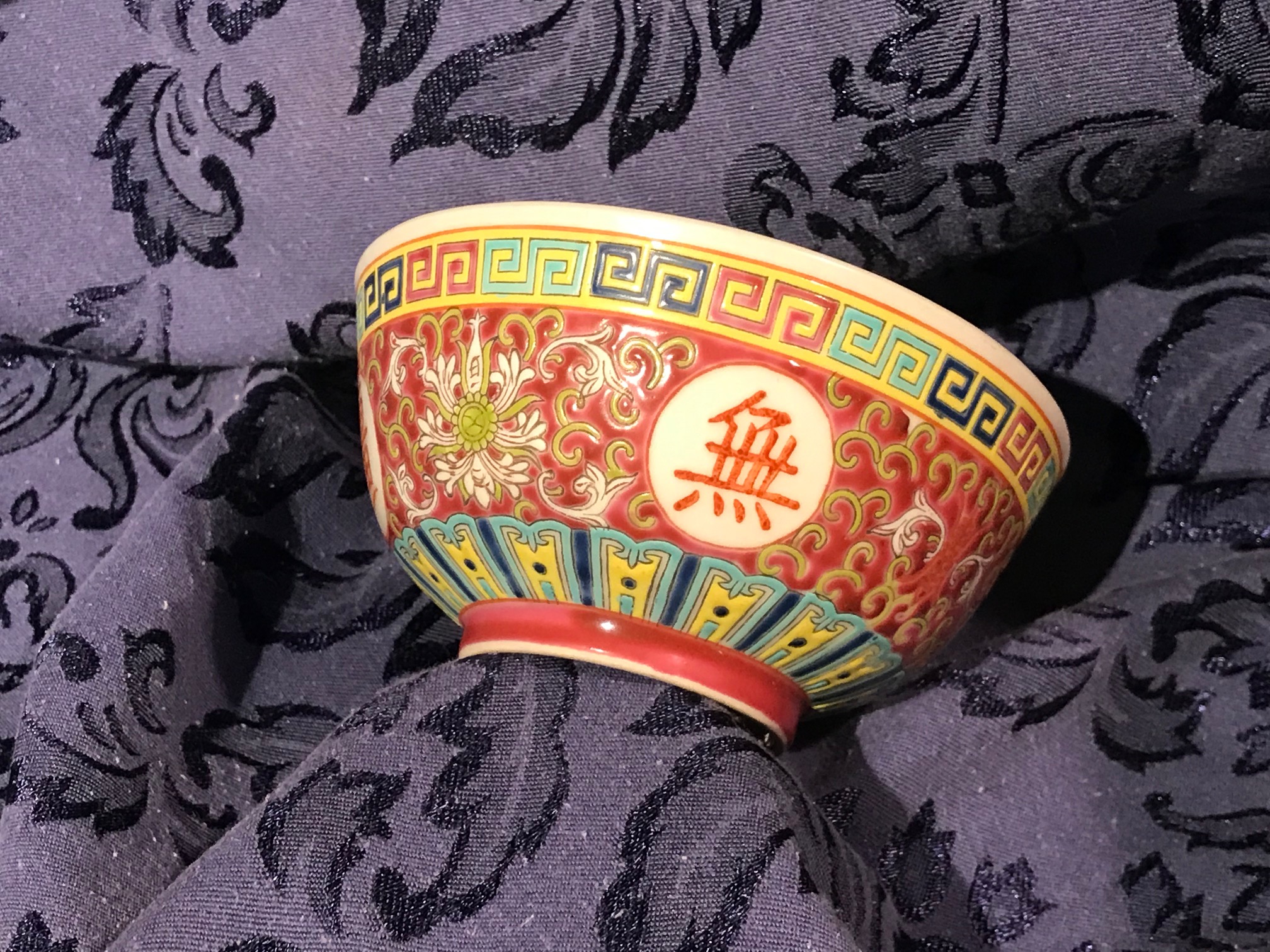
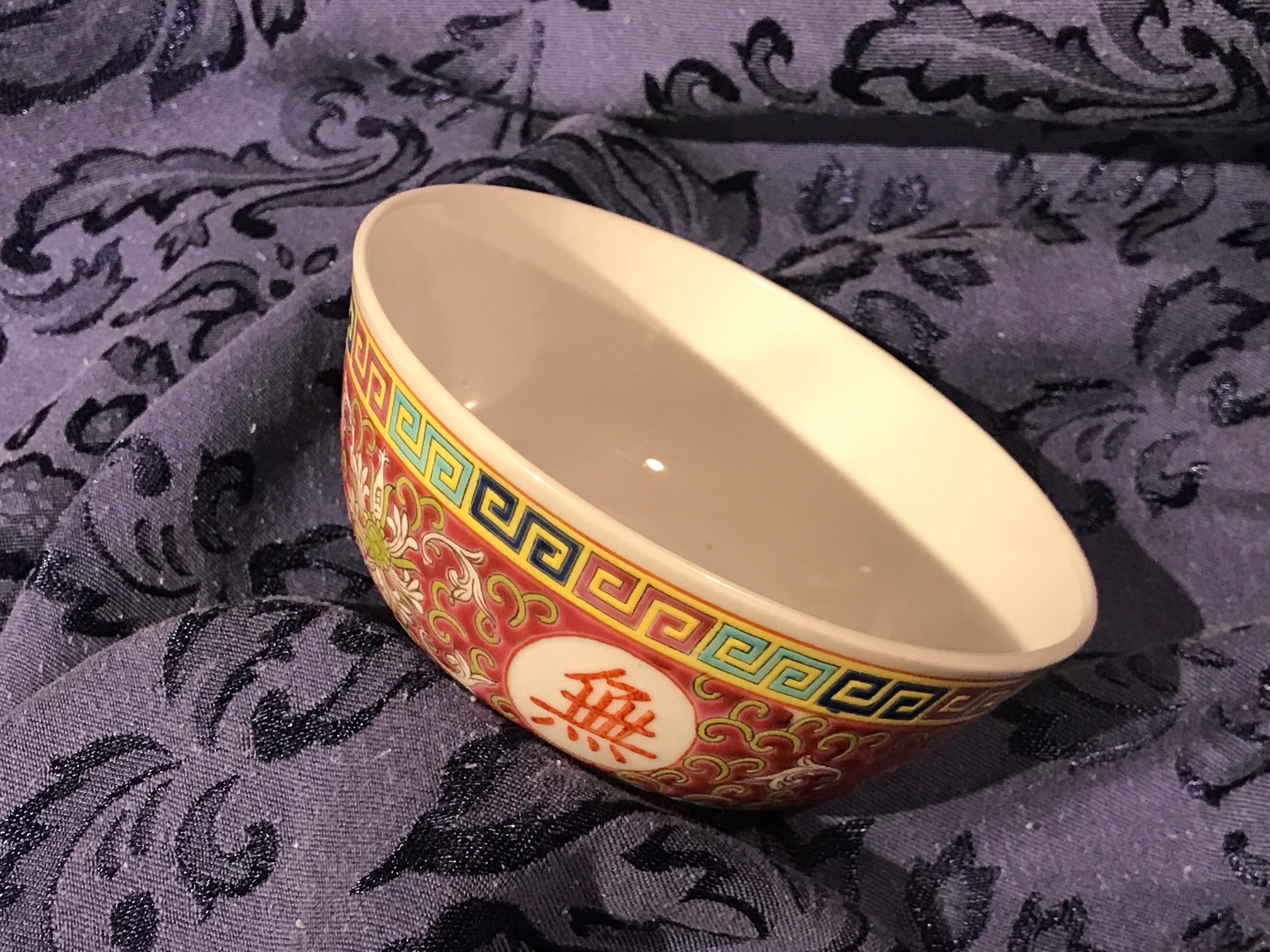
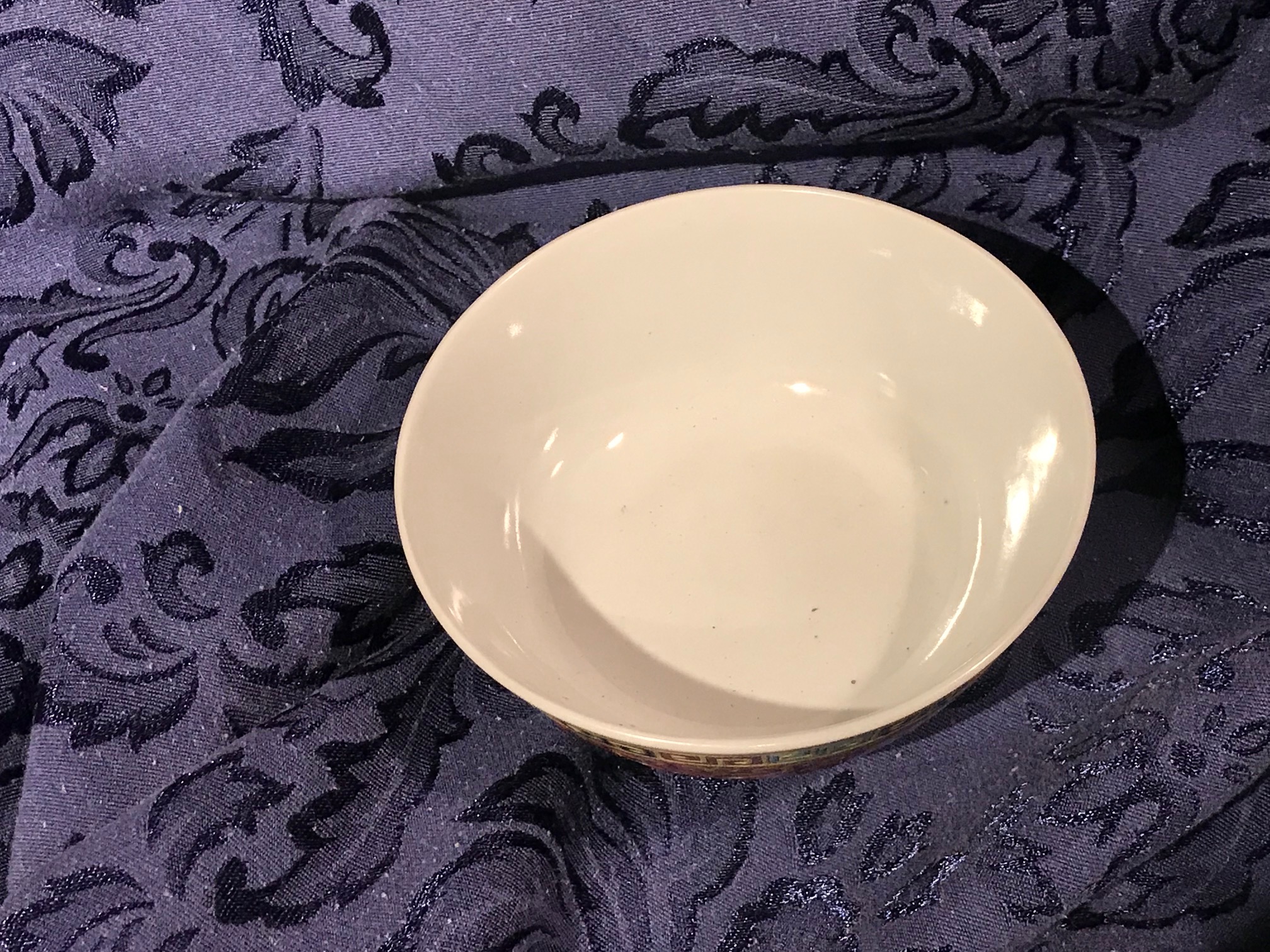
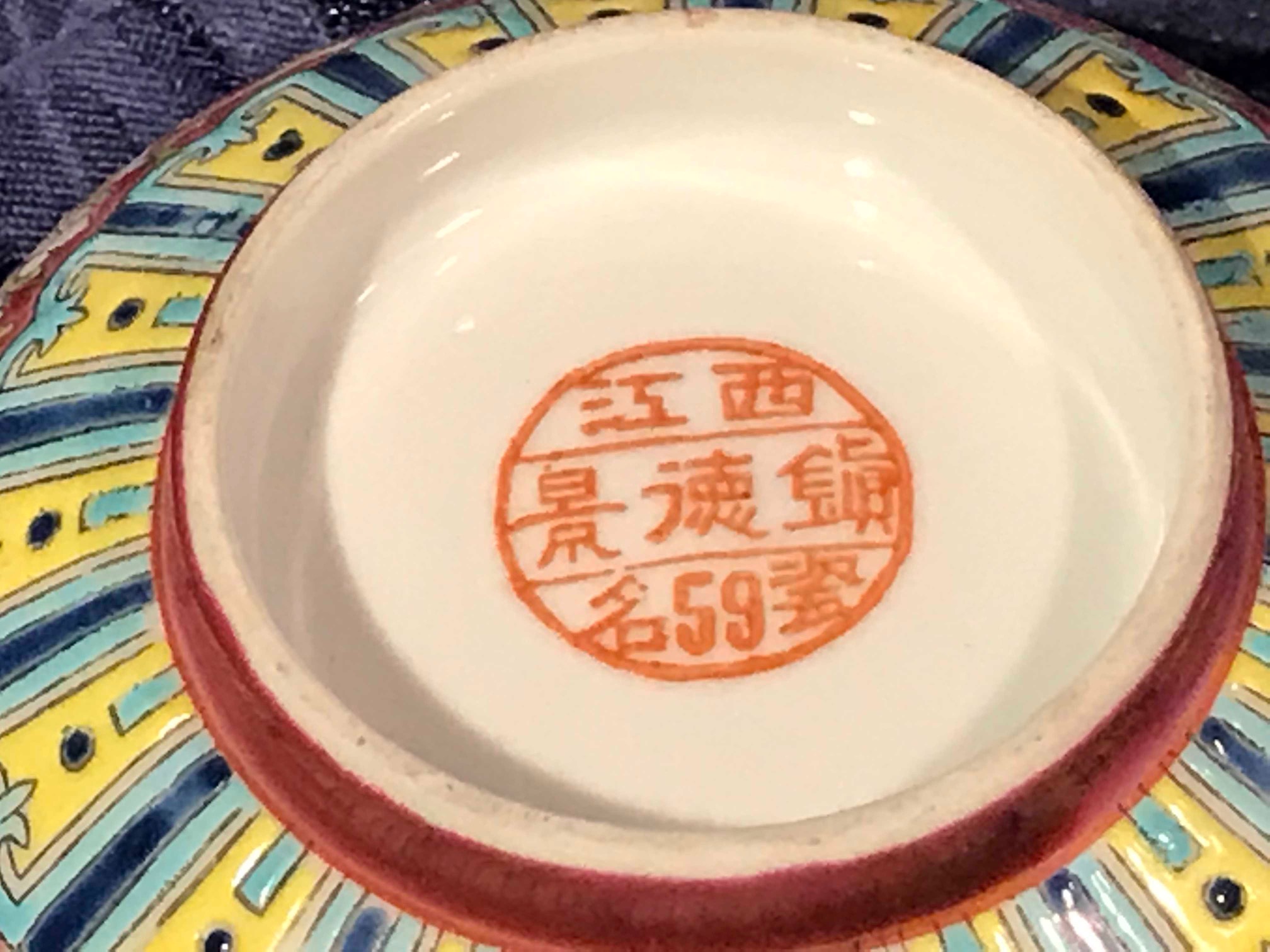
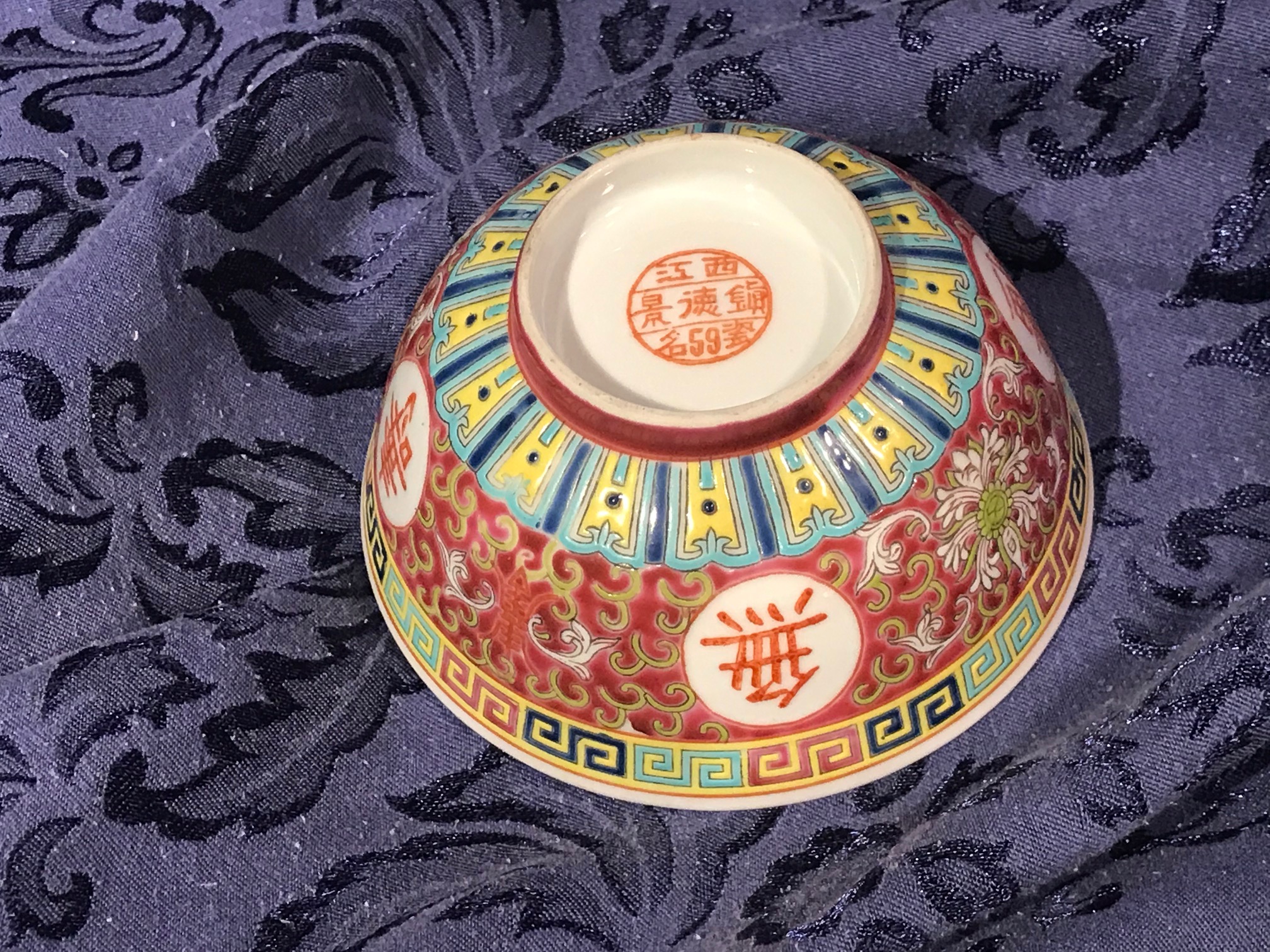

Hi, Tamara! This porcelain bowl is indeed from China. The Chinese character 無 on exterior means “Nothing” or “Naught” which I believe comes from the teaching of Buddhism. The Chinese characters 江西 (very top ones) on the bottom of the bowl are Jiangxi, a southeast Chinese province, historically it’s been on major north-south trade routes. The Chinese characters 景徳鎮 (middle ones) on the bottom of the bowl are Jingdezhen, northeastern Jiangxi province, China. It is historically known as the “Porcelain Capital”. The Chinese characters 名59?(very bottom ones) on the bottom of the bowl are the only ones which I am not very sure about(Sorry!), but I don’t think they indicate the location. I hope this helps.
Oh! Thank you so much for taking the time to write such a detailed response!!!!
Tamara
Recently a plant I’d put into a Mexican pot died
I’m sure it was the lead in the paint.
Very sad cuz they make beautiful tho lead contaminated ceramics
🙁
Tamara,
I bought dinnerware in the 1980s similar to the Rose colored bowl in your opening picture. My pieces were turquoise, they also came in yellow. There were complete open stock dinnerware sets, dishes, platters, teapots, and plates and bowls. I bought mine in Los Angeles Chinatown in the 1980s. A number of souvenir shops sold it and it was not expensive.
To make matters worse, these were very prone to chipping, both in the porcelain and in the paint. The dishes were completely covered with paint on the surface. They were marked, I think on a sticker, “for decorative use only” or something like that. So even in the 1980s someone was aware they were high lead. I can only imagine how much cadmium must have been in the yellow, it was a lemon yellow color.
I ditched mine after seeing your website, it had been sitting in a cupboard for years.
They’re still selling it on eBay and Etsy.
Thank you for commenting!
T
I have had many concerns with anything purchased from China since finding out that the paint used on their toy products had high levels of lead in them. I have been drinking from a tea pot purchased in China and just found out that it is laced with high levels of lead. So I am very grateful to see your detailed information on this bowl, especially since I have several that closely match. They will be in the garbage today. I am beginning to distrust products made outside the US since they cannot guarantee the safety standards that have been implemented in this country. Thank you for being one of the women keeping check on hazards that we are unaware of, and directly affect those we love and want to keep safe.